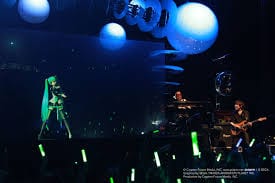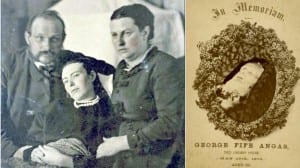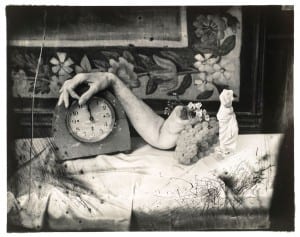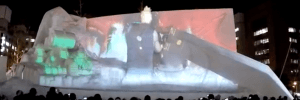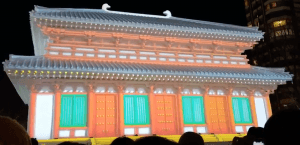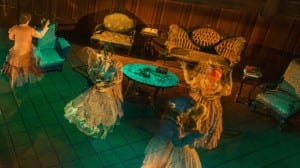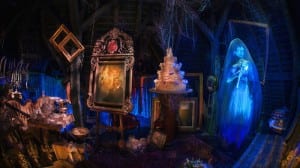On Sunday Feb 26th, I went to the Barbican centre in London to watch Hatsune Miku: Still Be Here. Hatsune Miku is a volcaloid; a holographic Japanese idol. Still Be Here was an art piece that talked about the lifespan and creation of Miku, her impact on the fan base, and how her music is created and presented. It also featured a ‘live’ performance by Hatsune Miku herself.
https://www.barbican.org.uk/music/event-detail.asp?ID=20330
For the performance, the character of Hatsune Miku is projected onto a plain of perspex positioned in front of screens on the stage. Miku herself is then projected onto said screen by multiple projectors in, in order to make her look 3D and like an actual person on stage. This perspex screen separates her from the background, further making Miku look like she is a real person on the stage. Miku then sings and dances as if she is a real person performing on stage. This is created using both the Volcaloid software, for the singing, and a mixture of programming Kinect software, and motion captured choreography in order to give her realistic dance movements.
Still Be Here commented on the Miku-phenomeon as a whole, and examined how a projected character could become a world wide celebrity. Afterwards, the creators of the piece talked about how they created Miku for this performance; giving insight into how they made a projected character look and act as if they were a human performer on the stage. They created content in the real world and then transformed it into a digital piece; merging the two in the process.
Hatsune Miku shows how a digital creation can go on to be a celebrity. By being a projection, she has the advantage of being able to be anywhere, and perform to any audience around the world. This also gives her the ability to be in more than one place at the same time, furthering her reach. By being a digital creation, Miku is the ideal celebrity, as she is unable to do anything that could be harmful to her reputation.Her content can be created by fans, and anyone can put their work into the Volcaloid program.
Hatsune Miku shows the advantage of working with projections instead of real people, as it allows more to be done with them, whilst still presenting them as real in the real world. Creating my ghost in the real world could be done in the same way as Miku is created, in order to make them look more tangible. Setting them away from the surroundings makes the character look more able to interact with said surroundings, and puts them further into the environment.
